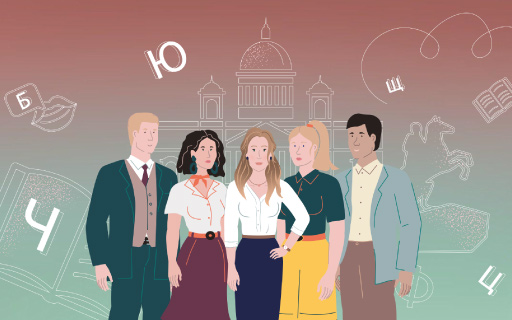
当前课程知识点:Culture and Tourism > Week 6: Affect and Emotion in Heritage Tourism > 6.2 Heritage Performance - Evidence from Australia, England and USA > 6.2.3 Heritage performance - recognition and respect
返回《Culture and Tourism》慕课在线视频课程列表
返回《Culture and Tourism》慕课在线视频列表
这是一个澳大利亚的女人
她其实是一个菲律宾人 刚移民到澳大利亚
她来到澳大利亚一个豪华古宅 想知道成为澳大利亚人意味着什么
她也在这里做一个澳大利亚人的表演
通过这种方式 她与过去的人们建立了联系
对她来说 这些人也以某种方式进入了未知的地方
澳大利亚是一个相对较新的殖民地国家
所以她在研究殖民历史 并与自己建立联系
这是一个刚移民到美国的非裔美国女人
她讲述了一个非常有名的地方叫埃利斯岛
这是关于美国移民的遗址
她说整个美国之旅我觉得我和它有联系
参观完这一遗址让她觉得自己与她作为一个美国人的新身份产生了联系
正如我之前告诉你的 我是牙买加人
来到这里 是挣扎的 是困难的 就像其他人挣扎的旅程一样
她的移民充满了挣扎
她明白其他移民也有类似的挣扎
这让她觉得彼此有联系
这让她觉得彼此有联系
这可能给她一种地方归属感
也作为她新的国家身份的表现
所以她们都是这样的女人
一个来自澳大利亚 一个来自这里
作为他们所选择的国家的新公民 坚持自己的民族话语
表现出归属感
回到民权博物馆和她儿子在这里的讲述
她的表达中 你可能还记得
博物馆里有白人这一事实给她带来的不适
她不喜欢那样 特别是在英国
还有澳大利亚和美国
我将在种植园之家或古堡庄园访谈白人
他们会看到来自不同种族背景的人经过
他们会停止访谈
说说那些人在这里做什么 然后发表评论
他们不喜欢有人和他们自己不一样
研究得出的结论之一是
人们喜欢去一些地方
在那里他们会看到像自己一样的人来建立这种联系
所以她看到跟她不同的人 这让她很不舒服
因为她在这里不受欢迎 为什么呢
为了理解这一点 我借鉴了南希·弗雷泽和艾里斯·杨的作品
来谈谈承认的政治
我认为遗产在很多方面都与承认的政治联系在一起
因此 承认政治说的是 从19世纪60年代开始
当然是在英语环境中
有一种新的政治方式
人们对认同感和过去所遭受的不公正感可能已经形成
即认同感是权力斗争中的合法资源
努力获取被剥夺的资源 使其重回自己手中
因此 这在资源的重新分配中很重要
如获得住房 福利 教育等
我认为遗产在承认的政治中 在承认存在差异的政治中
在承认存在不同的人的政治中 社会中存在着文化和社会经验的多样性
因此 遗产与人们被合法化或被要求的方式有关
人们所追求的身份是合法化还是非合法化
在遗产地发生的一系列的遗产表演都是与政治承认联系在一起的
一些游客明确地谈论了他们对不属于他们自己的遗产的参观
在参观其他人的遗产是对其他人的一种承认的声明
他们试图承认对方并使对方合法化
所有参观者都表达了自我尊重
说他们参观了这类属于自己的遗产
就是他们在社会上相遇的一种声明
一些来自强大的霸权主义的群体和占统治地位的民族的游客
承认自己是特权的继承者 这个人正在这样做
这是一个遗址 美国的佩克博物馆
佩克博物馆是一个美国印第安人土著历史博物馆
这个女人承认去这个地方让她觉得伤感
因为这让她认识到自己是一个白人 但白人来到美国
并带来疾病 他们带来杀戮和所有的东西
她认识到这对当今美国社会的影响
我们回到在民权博物馆的讲述者那里
去理解为什么她说我不希望白人来这里
她正以一种自我认知的方式去理解
我们需要感恩 她正在把社会和家庭的记忆传递给她的儿子
不仅仅是歧视 而是美国的民权运动
继续努力克服偏见
所以她为儿子在美国创造了一个自我认可的地方
我认为她一直在这里做的是她不想要负面的价值观
如果愿意的话 她想把黑人当作受害者的想法融入到他的身份中去
她不想在美国把伤害或消极的情绪带入她的自我意识中
我认为她是在反对这样一种可能性
即对不同于她自己的人进行自我认知
可能会带来负面影响
即将歧视变成她身份的一部分
而这是遗产献中经常提出的一个重要观点
在合乎博物馆逻辑的文献里
文物遗址 博物馆对他们来说应该是安全的地方
也应该是安全的
但这个女人所说的是 对她和她的儿子来说
这个地方并不安全
因为有可能因为白人的存在而误认或误解她是谁
正如她所说 她希望能够感觉良好
因为知道有一段民权运动的历史
让她向前迈进
她只是希望从一种受害者身份的感觉向前迈进
在我所做的很多研究中 就像我说的那样
游客们利用他们的情感来加强或参与代际交流的表演
或是进行自我认同 或承认自己是社会的特定成员
是一种特殊的政治公民等等
但对于教育这一主要的假设而言呢
我确实说过有教育表演
有什么有趣的呢
是不是在我调查过的国家级遗址上
曾经有人试图把那些令人不安的 令人舒服的 民族化的叙述信息加进来
这就是曾经试图教育人们的地方
有时是关于美国或英国奴隶制的历史
或者移民在主导社会中的角色等等
这发生在哪里呢 这是对教育的一种非常有趣的回应
而这种回应是反抗——不想接受教育
所以我现在要看的是
我们用什么样的情感来拒绝
博物馆或遗产地解说员的教育诉求
-1.1 Introduction course outline and UNESCO World Heritage Program
--1.1.1 Introduction of culture and tourism course outline
--1.1.2 Introduction of UNESCO World Heritage Program(1)
--1.1.3 Introduction of UNESCO World Heritage Program(2)
-1.2 Cultural Heritage-1
--1.2.1 The meaning of culture heritage
--1.2.2 Criterion(i): masterpiece of human creative genius
--1.2.3 Criterion(ii): exhibit important interchange of human value
--1.2.4 Criterion(iii): bear a unique or at least exceptional testimony
--How can the public understand the importance of heritage?
-1.3 Cultural Heritage-2
--1.3.1 Criterion(iv): an outstanding example in human history
--1.3.2 Criterion(v): represent a culture or human interaction with environment
--1.3.3 Criterion(vi): associated with living traditions of outstanding universal significance
-1.4 Natural Heritage
--1.4.1 Natural heritage features, formations and criterions
--1.4.2 Cases studies of natural heritage
--Cultural landscape meanings: The case of West Lake, Hangzhou, China
--How to access heritage of your hometown?
-2.1 Mixed Culture and Natural Heritage
--2.1.1 Mixed heritage operational guidelines and cases (1)
--2.1.2 Mixed heritage operational guidelines and cases (2)
--2.1.3 Mixed heritage operational guidelines and cases(3)
-2.2 Authenticity, Integrity and Cultural Routes
--2.2.1 How to determine authenticity and integrity
--2.2.2 Heritage routes and heritage canals (1)
--2.2.3 Heritage routes and heritage canals (2)
--What do you think about cultural heritage categories?
-2.3 Special Heritage and Sustainable
--2.3.1 Physical remains of the history of technology and industry
--2.3.2 Transboundary Heritage, Serial Heritage, Serial/Transnational Heritage
--2.3.3 Intangible cultural heritage
--2.3.4 UNESCO World Heritage and Sustainable Tourism Programme
--Recovering the Memory of Ourselves for the Sustainable Cites
--Week 2 quiz
--What do you think about cultural heritage categories?
-3.1 The Australia’s Heritage System and Sydney Opera House
--3.1.1 The Australian Heritage System
--3.1.2 Case Study: The Sydney Opera House
-3.2 Role of the ISCCL and Cultural Landscape (1)
--3.2.2 Uluru-Kata Tjuta National Park
--3.2.3 Honghe Hani Rice Terraces
-3.3 Role of the ISCCL and Cultural Landscape (2)
--3.3.1 West Lake cultural landscape (1)
--3.3.2 West Lake cultural landscape (2)
-3.4 Rural Landscapes as Heritage
--3.4.1 ISCCL Principles Concerning Rural Landscapes as Heritage
-3.5 Case Study: Mongolian Altai
--3.5.1 Nature Culture Integration & the Mongolian Altai(1)
--3.5.2 Nature Culture Integration & the Mongolian Altai(2)
--Week 3 quiz
--Discussion: What do you think is the role of ISCCL?
-4.1 Introduction of the Meaning of 'landscape’
--4.1.1 Brief introduction of landscape and culture
--4.1.2 The conceptual framework of cultural landscape
-4.2 Landscape Values
--4.2.1 The word “landscape” itself and differences in Western, Eastern
--4.2.2 Cultural significance for heritage source
--Discussion: What do you think the cultural landscape attracts you?
-4.3 Reading the Landscape: Identification and Assessment
--4.3.1 Planning model for heritage conservation management policy
--4.3.2 Cultural landscape resources evaluation steps
--Article: Cultural mapping: Intangible values and engaging with communities with some reference to As
-4.4 Case Study: Wingecarribee Historic Landscape
--4.4.1 Case study:Wingecarribee historic landscape study(1)
--4.4.2 Case study:Wingecarribee historic landscape study(2)
--Week 4 quiz
--Discussion: What should we do to strengthen the protection of cultural landscape?
-5.1 Indigenous Tourism
--5.1.1 Indigenous tourism background
--5.1.2 World heritage and indigenous peoples
--5.1.3 Tourism issues at Canadian indigenous world heritage sites
--Discussion: What challenges indigenous World Heritage faces?
--Article: State conceptions of indigenous tourism in Chile
-5.2 Case Study and Conclusion: Great Expectations for Tourism
--5.2.1 Case study Pimachiowin Aki
--5.2.2 Conclusions:Great Expectations for Tourism
--Disussion: Do you have any experience of indigenous tourism?
--Week 5 quiz
-6.1 The Definition of Heritage in Heritage Performance Study
--6.1.1 The definition of heritage in heritage performance study
--6.1.2 Heritage performance and meaning making
--6.1.3 Two key issues emerging from qualitative study
-6.2 Heritage Performance - Evidence from Australia, England and USA
--6.2.1 Heritage performance - reinforcement
--6.2.2 Heritage Performance - inter-generational communication and social values
--6.2.3 Heritage performance - recognition and respect
--6.2.4 Heritage performance - education
--Article:Theorizing museum and heritage visiting
-6.3 The Conclusion of Heritage Performance
--6.3 The conclusion of heritage performance
--Week 6 quiz
--Discussion: What kinds of heritage performances have you learned in this week?

